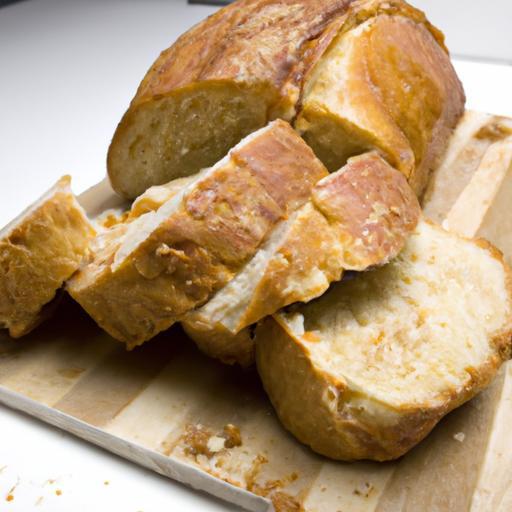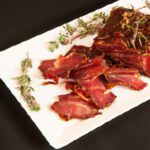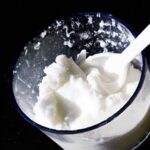There’s something deeply satisfying about the golden-brown crust of freshly baked bread-a visual promise of crispiness and rich flavor. But what happens when your loaf emerges from the oven with a crust that’s more ivory than amber, pale instead of toasty? That unexpected pallor can leave any baker puzzled and disappointed. Why is my bread crust so pale? The answer lies beneath the surface, woven into the chemistry of baking and the subtle dance of heat, moisture, and ingredients. In this article, we’ll unveil the secrets behind that elusive golden crust, exploring the factors that influence its color and crunch, and offering tips to help you achieve that perfect, appetizing sheen every time you bake. Get ready to transform your bread from bland to beautifully bronzed.
Why Is My Bread Crust So Pale? Unveiling the Secrets begins with understanding how the delicate interplay of heat and baking time affects the beautiful golden color we crave. Crust color is more than cosmetic-it’s a signal of flavor development and texture perfection. When you crack open a loaf with a deeply browned crust, you’re tasting the Maillard reaction and caramelization working their magic, transforming simple ingredients into a masterpiece. Let’s dive into how each choice you make, from ingredient selections to oven settings and moisture management, shapes your bread’s final appearance and taste.
Prep and Cook Time
- Preparation Time: 30 minutes (plus 1-hour resting/proofing)
- Baking Time: 25-35 minutes depending on loaf size and oven
Yield
1 medium-sized loaf (approximately 12 slices)
Difficulty Level
Medium – requires attention to heat and timing but perfect for committed home bakers
Ingredients
- 3 ½ cups bread flour, sifted
- 1 ¼ cups warm water (100-110°F)
- 2 tsp active dry yeast
- 2 tsp granulated sugar
- 1 ½ tsp kosher salt
- 2 tbsp olive oil (optional for a softer crust)
- 1 tbsp honey or malt syrup (enhances browning and flavor)
- Extra flour for dusting
- Water for steaming in the oven
Instructions
- Activate the yeast: In a small bowl, dissolve 2 tsp sugar in 1 ¼ cups warm water. Sprinkle in 2 tsp active dry yeast and let sit until frothy, about 5-7 minutes.
- Mix the dough: In a large bowl, combine 3 ½ cups bread flour and 1 ½ tsp kosher salt. Add the activated yeast mixture along with 2 tbsp olive oil and 1 tbsp honey or malt syrup. Stir with a wooden spoon until a rough dough forms.
- Knead the dough: Transfer to a floured surface and knead for 8-10 minutes until smooth and elastic. If dough feels sticky, dust lightly with flour; avoid over-flouring.
- First rise: Place dough in a lightly oiled bowl, cover with a damp towel, and allow to rise in a warm spot until doubled, about 1 hour.
- Shape and rest: Punch down dough gently and shape into a loaf. Place in a parchment-lined or lightly greased loaf pan or on a baking stone. Cover and rest for 20-30 minutes.
- Preheat the oven: Set oven to 475°F (245°C). Position a shallow pan on the lower rack for steaming.
- Create steam: Just before baking, pour a cup of hot water into the pan to generate steam; this encourages a glossy, deeply browned crust.
- Bake the bread: Place loaf on the middle rack and bake for 25-30 minutes. Midway through, rotate the loaf and if needed, remove the water pan to finish baking crispier.
- Check doneness: The crust should be a rich amber color, and the loaf should sound hollow when tapped on the bottom. Internal temperature ideally reaches 200-210°F.
- Cool completely: Transfer to a wire rack to cool fully for the best crust texture and flavor development before slicing.
Tips for Success: Achieving a Deeply Browned and Flavorful Bread Crust
- Temperature is key: Baking at a higher initial heat with steam encourages a Maillard reaction that produces a golden-brown crust bursting with nutty, caramel notes.
- Honey or malt syrup addition: These natural sugars intensify browning and add a subtle sweetness that enhances crust complexity.
- Use a baking stone or steel: This ensures even bottom heat and a better oven spring contributing to attractive crust coloration.
- Steam matters: Introducing steam during the first 10-15 minutes prevents premature crust hardening, allowing the surface to develop an even, crackly finish.
- Be patient: Avoid under-baking. A pale crust often signals the bread needs a few extra minutes or better oven calibration.
- Try baking with convection: If your oven has a convection mode, it circulates air to brown the crust more evenly and quickly.
- Experiment with flour types: Higher protein bread flour yields better browning than all-purpose flour. A percentage of whole wheat flour adds depth to crust color and flavor.
Serving Suggestions
Slice and serve your golden-crusted bread warm with a pat of butter and a pinch of flaky sea salt. For a rustic charm, present alongside creamy cheeses, olives, or homemade herb-infused olive oil for dipping. Toast slices to elevate nutty notes, paired beautifully with fresh preserves or savory spreads. Garnish with fresh rosemary or thyme sprigs for an earthy, aromatic touch that complements the crust’s robust flavor.

| Nutritional Info (per slice) | Calories | Protein | Carbohydrates | Fat |
|---|---|---|---|---|
| Classic Bread | 110 kcal | 4 g | 22 g | 1 g |
| With Olive Oil & Honey | 125 kcal | 4 g | 23 g | 3 g |
For a deeper understanding of how heat transforms bread dough, King Arthur Baking’s expert guide is a phenomenal resource. For more tips on perfecting your crust color and getting consistent loaves, visit our comprehensive bread crust tutorial.
Q&A
Q&A: Why Is My Bread Crust So Pale? Unveiling the Secrets
Q: Why does my bread crust come out so pale instead of golden brown?
A: A pale crust often signals that the Maillard reaction-the natural browning process-isn’t happening fully. This can be due to factors like insufficient oven temperature, lack of sugars or proteins in the dough, or steam levels in the oven. Without the right heat and chemistry, your bread misses that alluring golden hue.
Q: How does oven temperature influence crust color?
A: Think of the oven as your bread’s golden artist. If it’s too cool, the bread struggles to develop flavor and caramelization. Typically, bread bakes best between 375°F to 475°F. Temperatures too low will only gently cook the bread but won’t coax out that beautiful browned crust.
Q: Can the ingredients affect why my bread crust stays pale?
A: Absolutely! Sugars (from added sugar, honey, or natural malt in flour) and proteins (like gluten and milk proteins) fuel the browning process. Breads low in these components-like some gluten-free or low-sugar recipes-often yield lighter crusts. Try adding a little honey or milk to your recipe to boost color and flavor.
Q: Does steam during baking play a role in crust color?
A: Yes! Steam helps create a thin, shiny crust and promotes better oven spring. However, too much steam late in baking can delay crust browning, leaving it pale. Ideally, introduce steam early on, then let the oven dry out to encourage that golden finish.
Q: Could my oven’s calibration be misleading me about the actual temperature?
A: Definitely. If your oven runs cooler than the set temperature, your bread can bake thoroughly but not brown well. Consider using an independent oven thermometer to check if your oven matches the dial-and adjust accordingly.
Q: Are there baking techniques to encourage a darker crust?
A: Try brushing your dough with milk, butter, or egg wash before baking. These coatings add protein and sugars to the surface that brown beautifully. Also, extending baking time slightly or finishing with a higher temperature (the “broil method”) for a minute or two can boost crust color-just keep a close eye to avoid burning.
Q: Can I fix a pale crust after baking?
A: While it’s tricky to transform a pale crust after baking, a quick pass under the broiler for 1-2 minutes can help deepen the color. Be sure to monitor closely because the line between “golden” and “burnt” is paper-thin!
Q: What’s the secret takeaway for lustrous, golden crusts?
A: It’s a buttery dance between oven heat, dough ingredients, steam, and a sprinkle of technique. Give your oven a temperature check, enrich your dough with natural sugars or a wash, introduce the right amount of steam, and you’ll unlock crusts that are as radiant as the bread’s aroma.
Elevate your baking magic by understanding these crust secrets-and watch your bread glow with golden pride!
Key Takeaways
As the final crumb settles and the last slice is savored, the mystery of the pale bread crust unfolds like a well-kept secret. Whether it’s a subtle mix of ingredients, a gentle oven temperature, or the elusive dance of steam and time, each factor whispers its part in the crust’s story. Now, equipped with these insights, you can transform your baking journey-turning those pale, shy crusts into golden crowns that invite a joyful crunch with every bite. So next time you pull a loaf from the oven, remember: beneath that pale surface lies a world of chemistry, craft, and passion waiting to be mastered. Happy baking!


